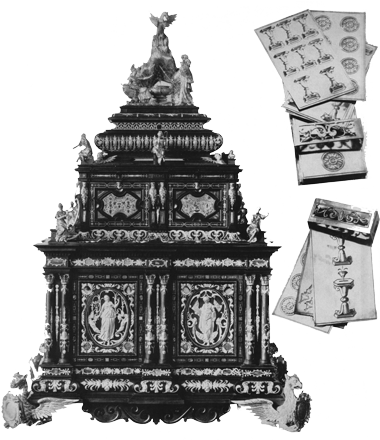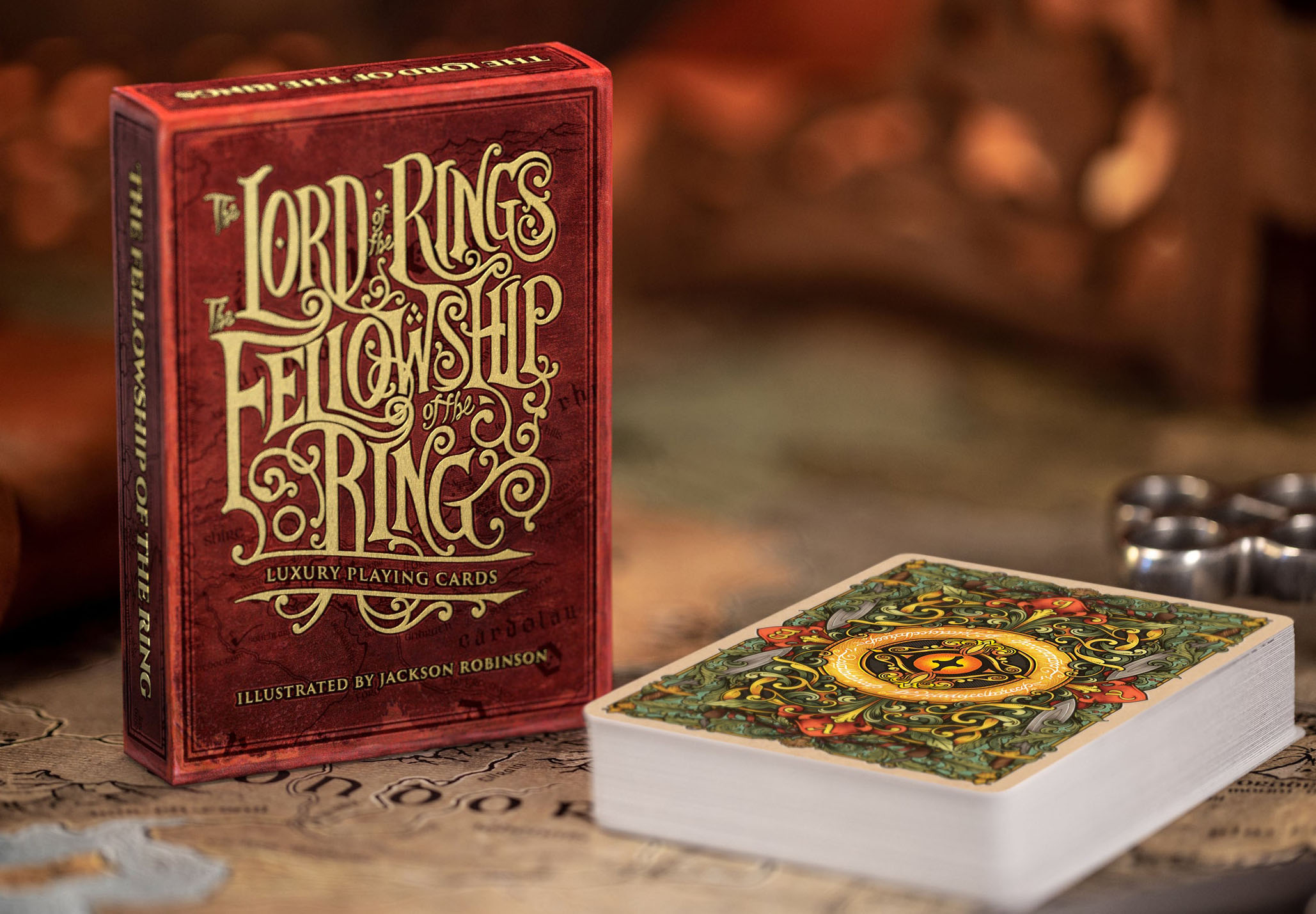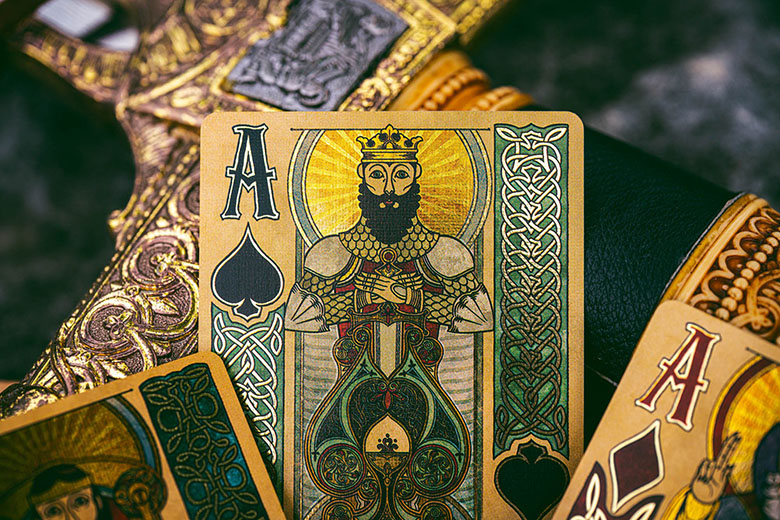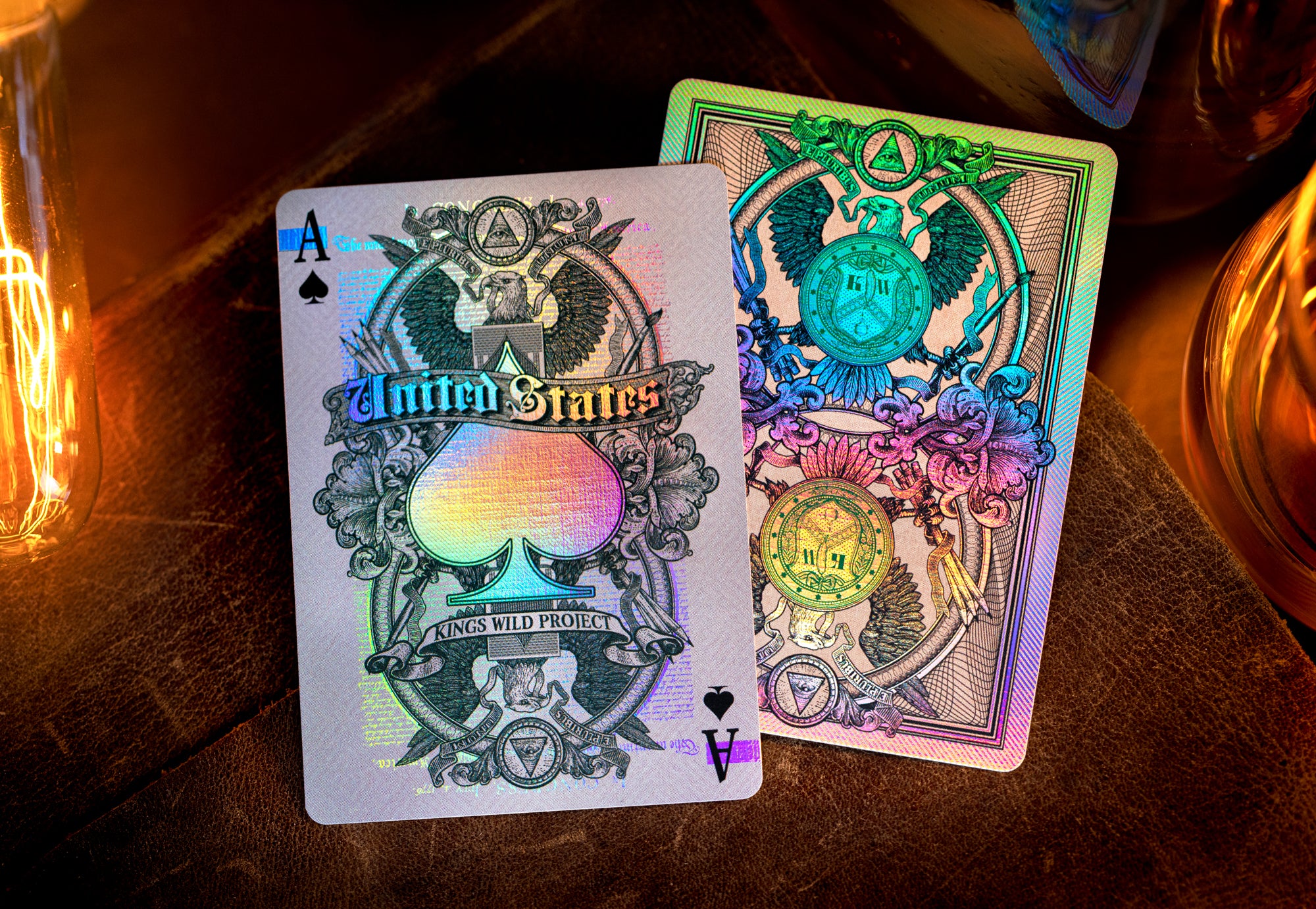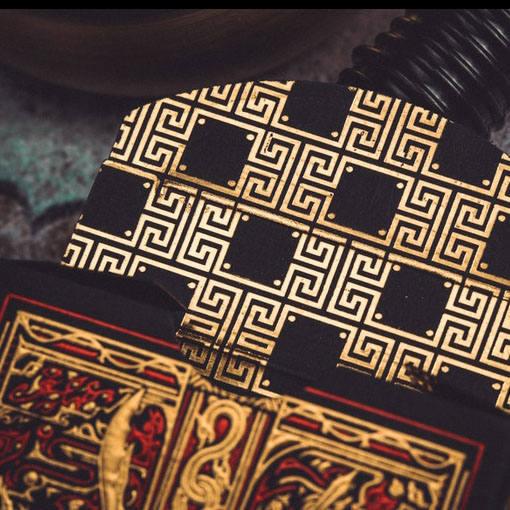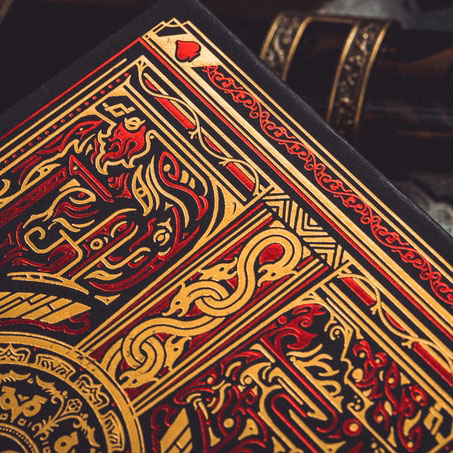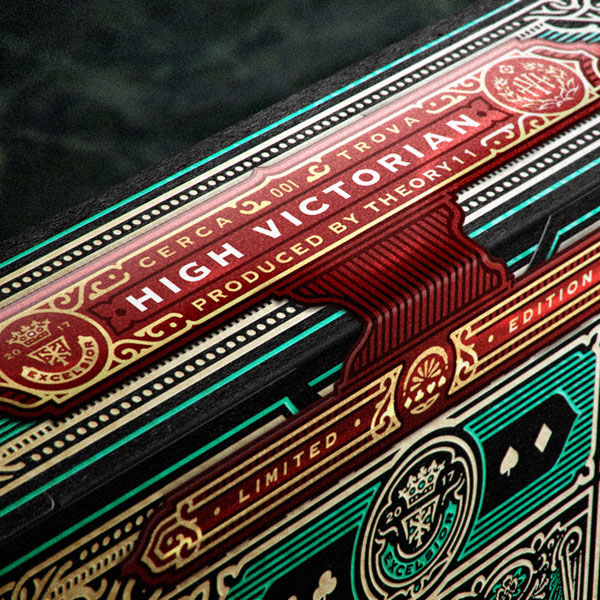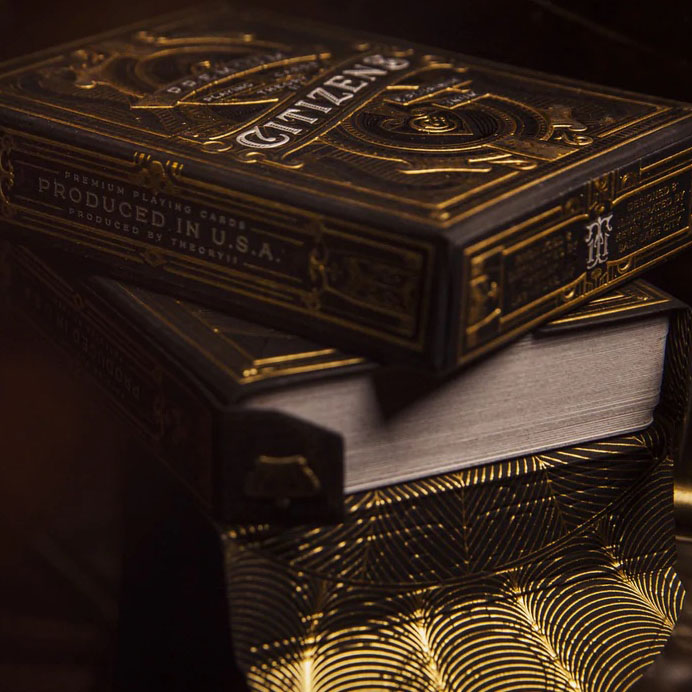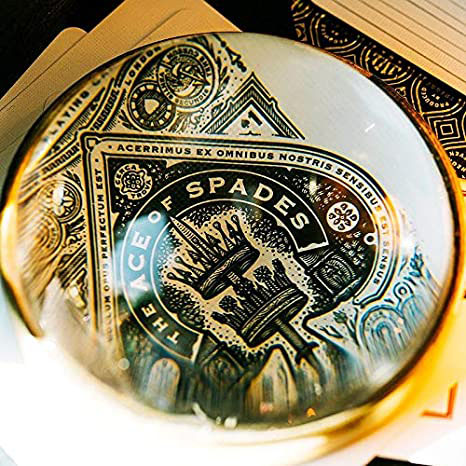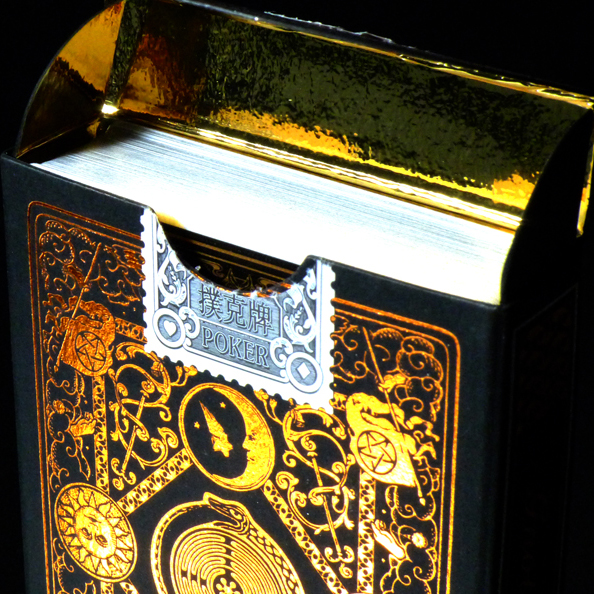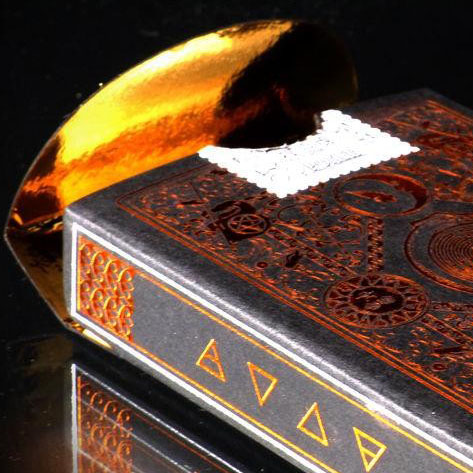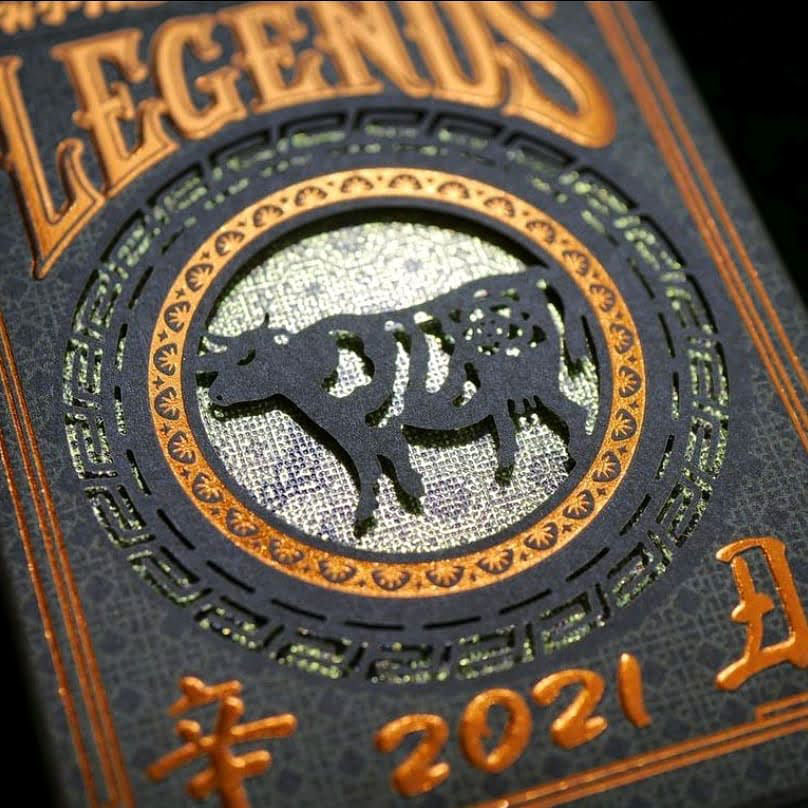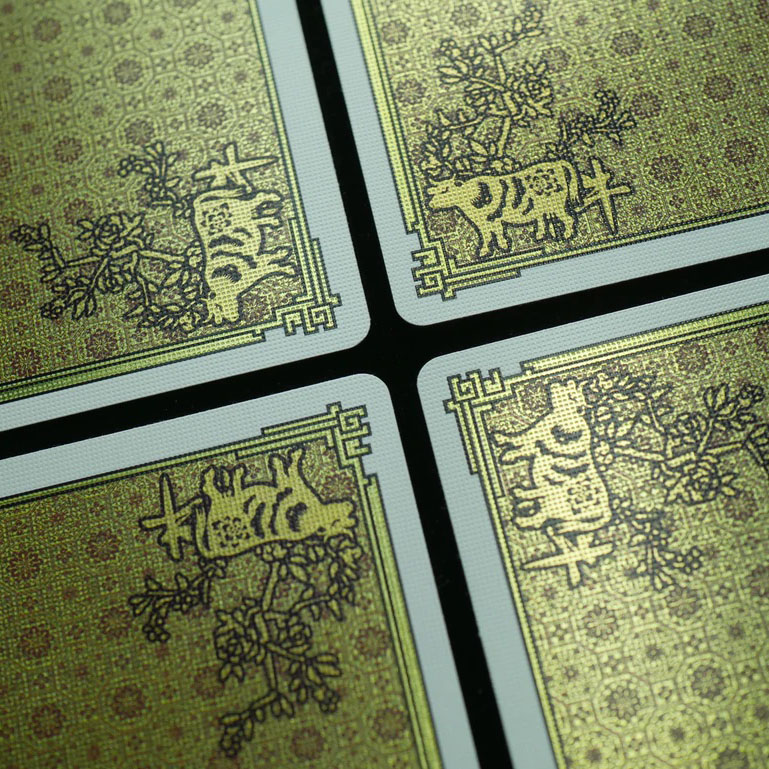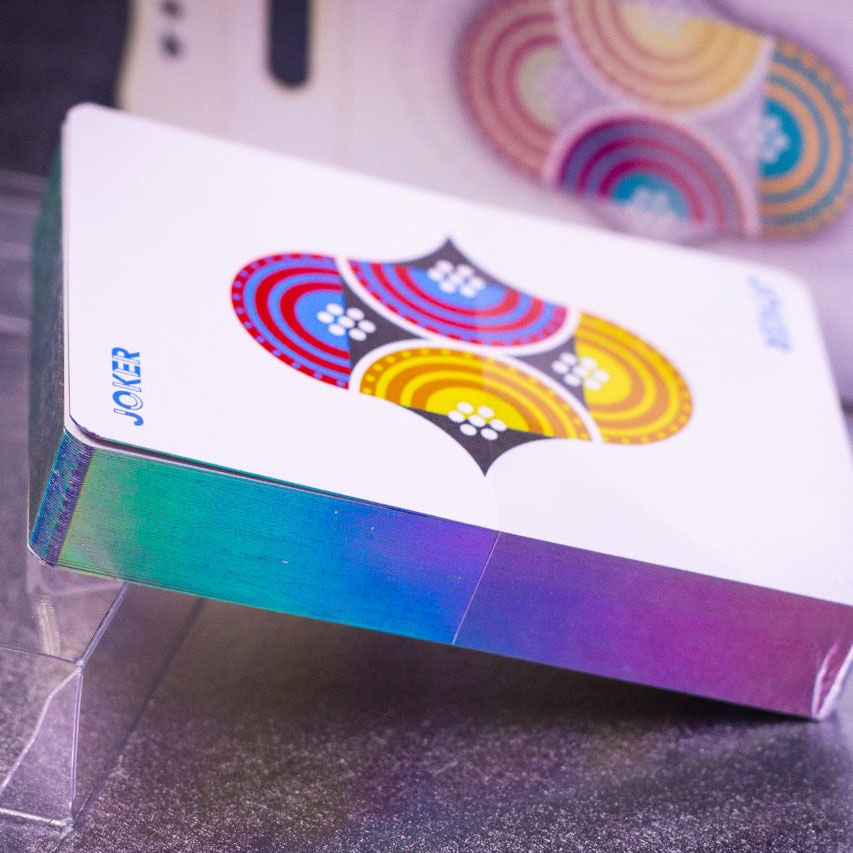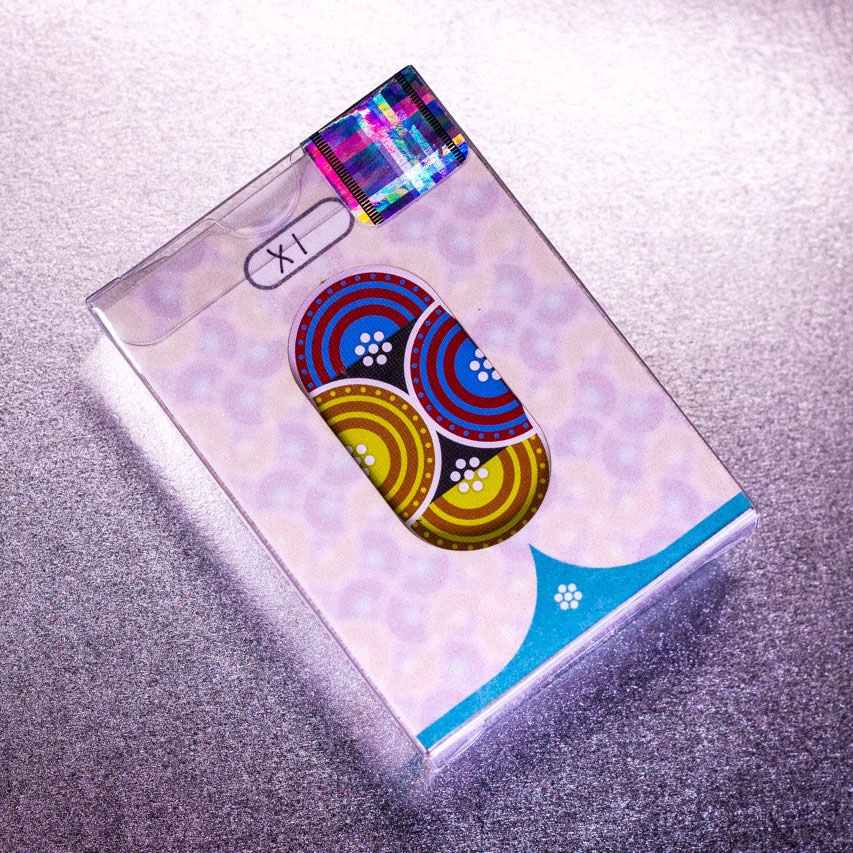Luxury Collectable Playing Cards
Luxury packs of cards have been produced since the 15th century, a trend that is very popular among collectors today.
Playing cards manufactured primarily as collectibles (gift or luxury items), rather than simply for playing card games is not a new trend. As far back as the 15th century there’s evidence that artisans were producing luxury packs intended for display in cabinets, often gilded and with elaborate designs.
The invention of xylography (and typography) meant ordinary cards were cheap enough so that even the poor could buy them. Very often it was the humble, local manufacturer (not the specialised artisans) who would make cards intended for everyday use, sometimes with a trademark or quality grade such as “Fine” or “Superfine”. These packs were intended for everyday card players, and were usually inexpensive and had cheap packaging (paper wrapper).
But cardmarkers and artisans also wanted to sell something to collectors, special packs that some regarded as works of art that were generally considered unsuitable by card players.
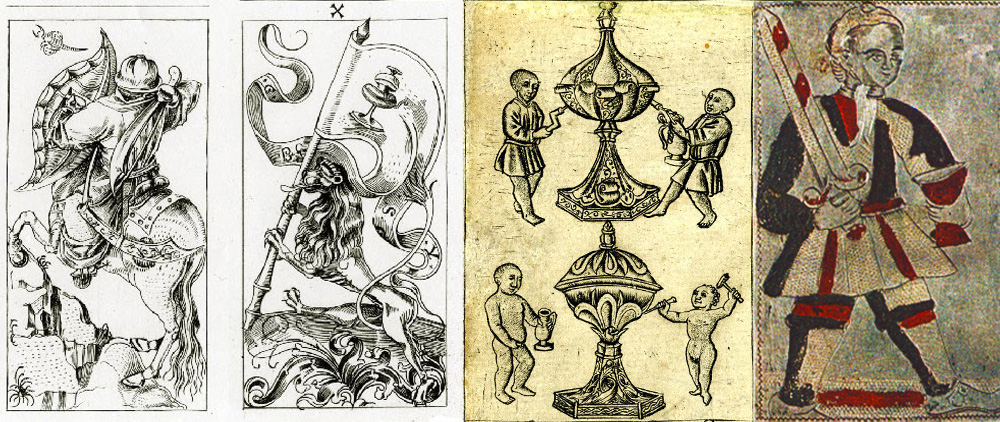
Above: Examples of 15th to 18th century luxury playing cards. The pack of cards by the South German Engraver, Master of the Banderoles, and Silver Cards from Peru, all luxury decks created for high-end clientele.
H. T. Morley (Old and Curious Playing Cards, 1931) mentions that packs from 1490 made for governors and other high dignitaries are “beautifully finished hand-drawn and painted packs” often “very beautifully finished by hand in gold, silver and colour”.
These luxury packs were frequently hand-painted, featuring fully custom card designs, or had richly decorated boxes made of fine wood or engraved metal. They often incorporated gold or other precious materials into the artwork and package decoration. All these features were intended to enhance the desirability to the collectors, and not intended for play.
We find all these trends today in modern luxury decks often funded through Kickstarter campaigns or produced by studios who focus only on luxury collectible decks, usually mimicking the gothic style.
Are luxury decks an innovation?

Above: Dougherty’s innovations include adding corner indices as well as numerous other patented inventions.
Are luxury decks an innovation?
Usually when we think of innovation and playing cards, pioneers such as Andrew Dougherty and Thomas De La Rue (considered by some to be the grandfather of the pack of cards due to his innovations) come to mind. Both helped bring about what we consider to be a standard pack of cards today. Features such as the pips, corner indices, rounded corners and the introduction of the joker.
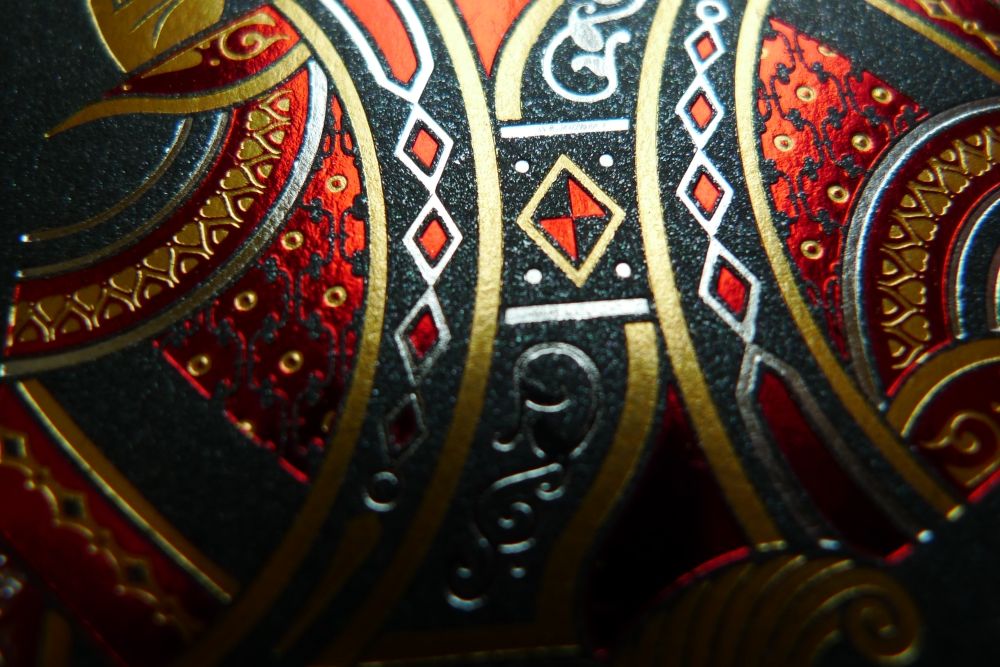
Above: Detail by Oath Playing Cards. Many luxury decks use metallic foiling on the artwork.
During this period decks were produced solely for the player, and producing decks for collectors was very uncommon. What we call a “brick” today was the way the cards were wrapped up and priced for retail to stationers and card sellers, but unheard of that a collector would want to have a brick.
However, design, printing, and manufacturing innovations have continued to advance for card collectors (for example: elaborately decorated bricks, uncut sheets, new printing techniques focused around metallic inks). There are studios today that are focused on innovating what a deck of cards can be for a collector. With lots of new playing card companies starting up and entering this new market.
Two of the pioneering niche playing card manufacturers are Legends Playing Card Co. and Expert Playing Card Co. (both founded in 2013). Both specialise in luxury deck production; they claim to produce the most luxurious and best made playing cards in the world, technically perfect, which has now evolved into luxury.
exquisite detail superior design bring you a new standard to playing card quality and innovation
Legends say this sets them apart and that they are “improving the playing card”.
Printing methods used by many of these manufacturers include the use of metallic inks throughout the artwork and ornate foil-stamped backs; the decks often feature die cut elements with deep embossing and foil accents.
Boxes for luxury decks often include transparent and cut-out sections that create windows revealing more layers of artwork. Often with gold foiling inside and outside of the box and perforated stamp-seals which mimic the old security seals.
The artwork often includes hidden messages, symbols and other enrichments which are intended to add to the deck’s overall collecting experience.
All these innovations don’t enhance the deck for card players or the original intention of playing cards, only superficial changes for a luxury deck collector.
Kickstarter and the Rise of Luxury Decks
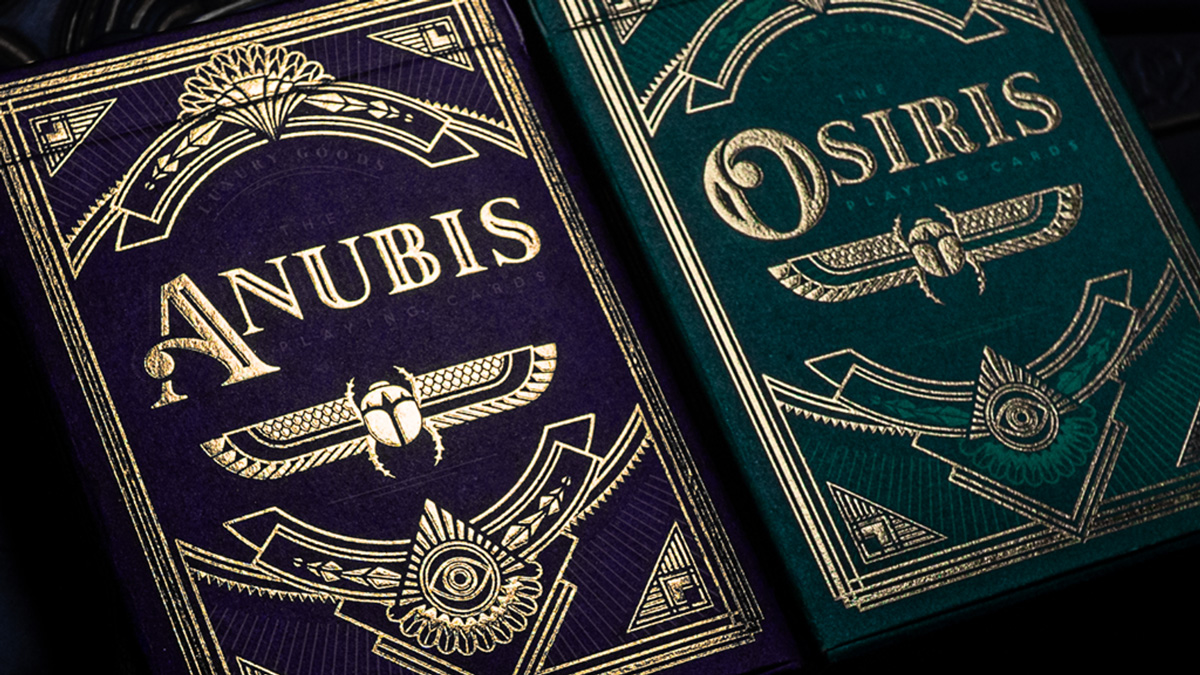
Above: Anubis & Osiris Shadow Luxury Playing Cards; an Egyptian themed limited edition custom luxury playing card decks designed by Steve Minty which raised $321,052 to bring their "meticulous illustrated" deck to life.
Additionally, manufacturers often had a high minimum quantity, such as 10,000 decks. This resulted in many artists having huge amounts of unsold inventory.
With the invention of Kickstarter the risks are radically changed. Artists now have a different way to fund their projects. The collector will “pledge” money to support the project. The artist sets a funding goal, and if people pledge enough money to reach the goal, the project is funded and the exact amount of decks needed are manufactured, and this is usually referred to as a “limited edition” because there are no extras printed.
This “limited edition” creates artificial scarcity which is used as a tool to enhance the collectability and can be perceived to increase the chances of the deck’s value in the future. Paul Carpenter (the artist behind Encarded) says via email “when a deck of playing cards is made in small numbers and hard to come by, or has the individual numbering, the owner knows that not just anyone can have that item in their collection”.
“You can't simply go to the store and buy one, instead you have to be diligent, maybe stay up late to get your order placed within minutes of release, and the thrill of that process is a big part of the overall experience.”
Although Kickstarter was launched in 2009, it wasn't until 2011 that playing cards really started to thrive on the platform. There were several notable Kickstarter projects in 2011, which paved the way for what luxry decks have become on Kickstarter today.

Above: Brimstone

Above: A Deck of Playing Cards
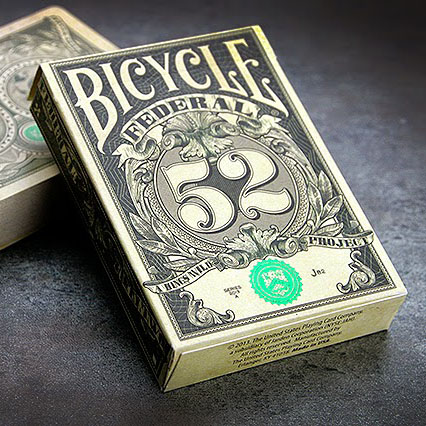
Above: Federal 52
| Project Name | Comment | Project Launch Date | Amount Raised | Artist |
|---|---|---|---|---|
| Brimstone - Metallic Gold Accented Card Deck | One of the first luxury decks to reach $20,000 | May 11, 2011 | $20,983 | Russell Kercheval |
| A Deck of Playing Cards | First luxury deck to reach over $100,000 | October 2, 2012 | $146,596 | Tyler Deeb (Pedale Design) |
| Federal 52 | First Kings Wild Kickstarter project | March 14, 2013 | $149,156 | Jackson Robinson (Kings Wild Project) |
Brimstone - Metallic Gold Accented Card Deck: one of the first projects on Kickstarter which emphasised the use of metallic inks throughout the deck, which has become one of the standard features of the modern luxury deck. Brimstone was also one of the first playing card projects to reach over $20,000 on Kickstarter.
A Deck of Playing Cards: a year and a half later Tyler Deeb launched a campaign simply titled A Deck of Playing Cards which also had many traits of a luxury deck — embossing, gold foiling, “premium grade” cardstock. The campaign was a milestone, being the first to raise over $100,000. As a result of this remarkable achievement, Tyler Deeb, the deck's creator, was able to get funding and launch his own luxury brand business, Misc Goods Co., which has since gone on to make multiple iterations of the card deck as well as other high-end goods.
Federal 52: just six months later, Jackson Robinson successfully funded his Federal 52 deck, raising almost $150,000. More than 50 bricks were sold, a major development of the luxury deck collecting market. Robinson, now one of the artists at the forefront of the luxury deck market, and owner of Kings Wild Project says that they make “the most luxurious playing cards in the universe” the decks “look awesome and tell stories, but also happen to be playing cards. We take an ordinary pack of playing cards and make it into something so much more.”
There were a handful of other playing card Kickstarter projects around 2011-2012, launched by artists, specifically with collectors in mind. A deck of custom-made playing cards was a new concept on Kickstarter at the time, and many backers were impressed by the idea.
Crowd-funded campaigns on Kickstarter unlock creativity and new ideas, but are they artificially creating desire through tiered rewards and a sense of urgency with funding targets and a time limit?
Luxury Playing Card Artists, Studios & Producers
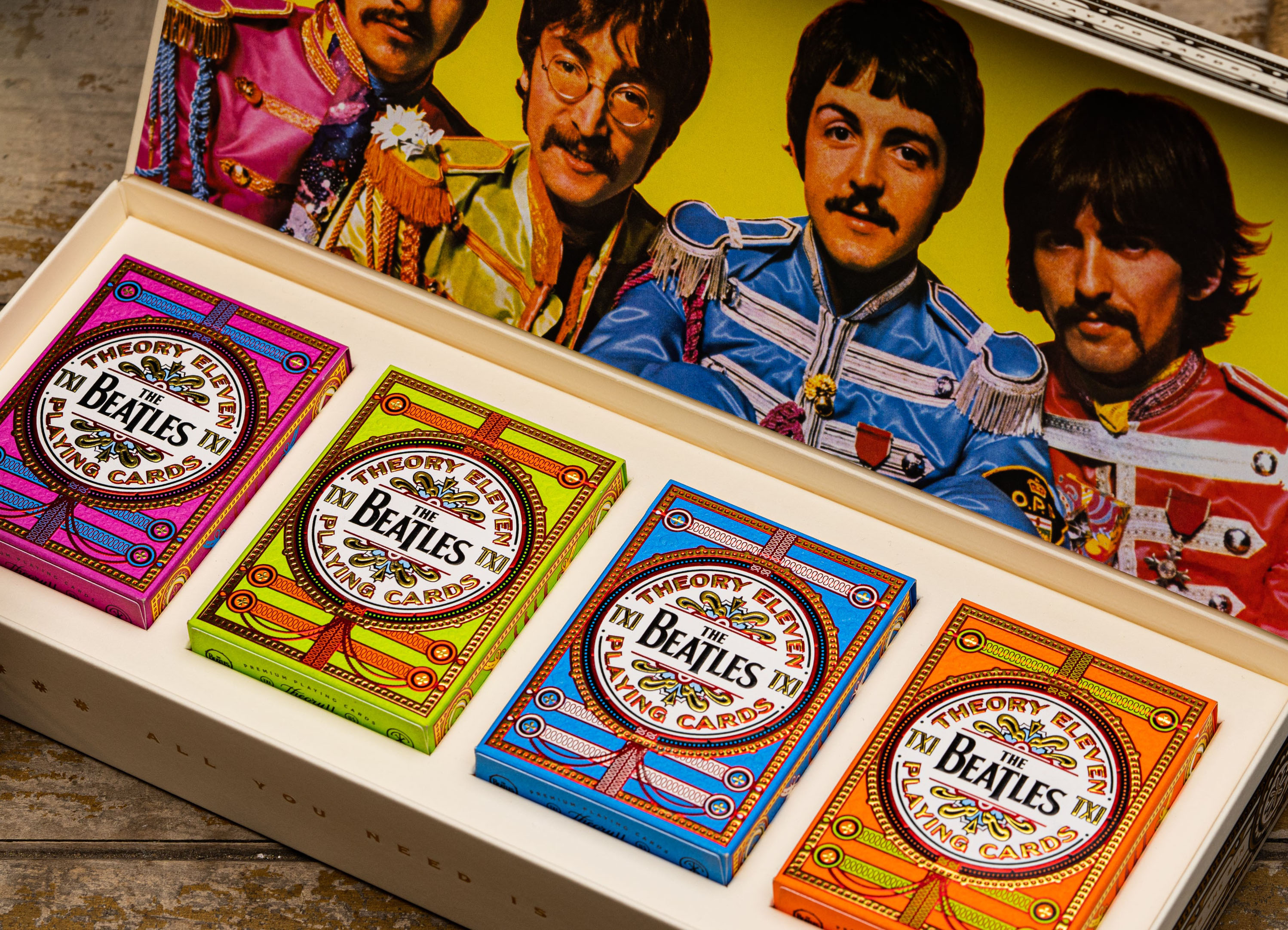
Above: The Beatles Premium Playing Cards by Theory11. "A breathtaking, ivory and gold foil box containing one of each of The Beatles Premium Playing Cards. The box is wrapped in intricate, elegant design on almost every surface".
Today, luxury playing cards have become a new niche collecting market, with artists and small businesses dedicated to producing high-end decks, and ever more extravagant productions. The number of backers and funds raised are reaching impressive levels.
Artists such as Lorenzo Gaggiotti (Stockholm17), Giovanni Meroni (Thirdway Industries), Alex Chin (Seasons Playing Cards), Jackson Robinson (Kings Wild Project), Paul Carpenter (Encarded), Jody Eklund, Steve Minty and others have loyal fans who will back their new designs almost immediately. Decks signed by these artists sell for a higher price in the secondary market (such as eBay).
Paul Carpenter (Clear the Decks, Jan 2020, p.4) also notes “I think that moving forward we will start to see fewer "basic" projects and more deck designs that include the latest luxury features, special designs, limited editions and handmade accessories".
Many of these studios promote their decks as superior in every way when compared to an ordinary pack of cards; and that they are pushing the limits of innovation in playing card design and production.
Sirocco Modern Edition, designed by Nathan Oser and produced by Riffle Shuffle Playing Card Co. on Kickstarter says that the Sirocco deck “with its meticulous composition is not just a work of art, but a token of a lifestyle and experience. With gold and silver paired foiling, intricate embossing, and double-sided printing it's an indulgence. Limited to 2500 decks”.
Are luxury decks an investment for a collector?
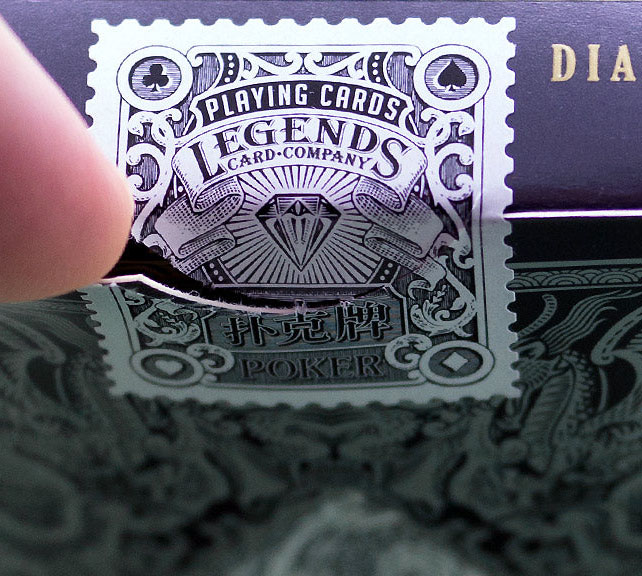
Above: Detail showing a perforated stamp-seals which mimic the old tax seals from Legends Playing Card Company.
Lorenzo Gaggiotti (the artist behind Stockholm17) says: “often a deck stays sealed in its cellophane, or the seal - if any - remains intact. It is a little odd, because the main product does not even see the light of day and often the main protagonist is the packaging. However, they know there is a "treasure" inside, especially if the deck is 100% custom made with custom illustrations and attractive art”.
For some people, collecting is a speculative art, where people look for rare or interesting items and want to keep them perfect in the hopes that someday that rarity will pay off with a financial gain.
Paul Carpenter explains: “many collectors like to keep their decks pristine and sealed. I think it stems from the core motivation that you have to collect. For some people, collecting is a speculative art, where people look for rare or interesting items and want to keep them perfect in the hopes that someday that rarity will pay off with a financial gain. To that kind of collector, keeping the item unopened is the surest way to guarantee that their copy will be valuable. Other collectors, however, want to experience the deck in its entirety. They are not interested in reselling someday, they want to feel and see all the details”.
Rod Starling points out that even “rare and very interesting” early 1900s decks are sold for “a mere $355” […] “that does not bode well from an investment standpoint”. However, Paul Bostock (Clear the Decks, Mar 2020) is more upbeat and says, with reference to early Kickstarter campaigns, that “some of the early pace-setters are now priced in hundreds of dollars [...] There is roughly a new set launched every day!”. With so many new Kickstarters they may not all turn out to be a good investment. Lee Asher on the topic of NFTs says “like any investment or collectible, it could lose value unexpectedly”.
It’s up to the collector what they collect and how much they pay, so who knows what they will be worth in the future?
What do Collectors Really Want?
As we have seen in the 15th century, talented artists have been creating premium products for collectors for centuries. With the rise of social media and crowdfunding sites like Kickstarter, it's now easier than ever for artists and studios to make decks for collectors with a taste for luxury.
Tony Hall is “particularly attracted by quality. The workmanship on some of my items is extraordinary” and that as a collector the ”ingenuity of design is also a big draw”.
The collector is the focus in the luxury card market.
Seasons Playing Cards, a studio which specialises in luxury decks says: “we strive to create timeless designs that continue to inspire, because when done properly these decks become a shared experience between artist and collector [...] each deck has an experience waiting to happen”.
Ian Taylor, via email, has a different perspective saying: “I only became aware of the Kickstarter trend after looking online for a way of cataloguing my collection. I came across Portfolio52 and it had so many "new" intricate designs. I have made a number of purchases […] but realised I was being carried along on a wave of crazy buying. The best thing about "proper" cards is that they have been played with, as nature intended!”.
Gaggiotti agrees “once a new collector joins the community they are quite confused and realises that they’re in a rabbit hole”.
Different collectors want different things and for a variety of reasons. As Tony Hall has said, there are so many reasons for collecting: quality, ingenuity of design, originality and rarity.
{*
*} With luxury decks, exclusivity is also a reason pointed out by Paul Carpenter: “when a deck of playing cards is made in small numbers and hard to come by, or has the individual numbering or other touches that speak to its rarity, the owner knows that not just anyone can have that item in their collection”.The collector is the focus in the luxury card market rather than the card player. It seems like these collectors can't get enough, which drives demand for bigger and more evocative collections of decks and accessories. Some people will pay high prices for these “exquisitely ornate” luxury collector’s decks.
“It’s still kind of in the realm of an impulse buy for a lot of people, and we usually find that our first-time customers will buy one deck of cards,” Jackson Robinson explains “They receive it, and then they’re like, ‘Wow, this is awesome, I didn’t know that playing cards could be this. I didn’t know that this world existed.’ And then, about two weeks later, they’ll come back—and they’ll buy six decks.”
These collectors often have custom made display shelves, as shown below. There is a sense of pride of ownership in the exquisite craftsmanship, which is put on display to be admired. The producers are offering evermore ambitious bundles, including sarcophagus boxes, bricks, signed uncut sheets and endless addons.

Above: A display of luxury decks posted by GwendolynP on Reddit.
Modern Luxury Deck Formula
We can see there’s a visual trend in the designs of these decks, which tend to mirror a gothic style. Here are just some of the traits of luxury decks:
- Emphasis of intricate detail and exquisite designs (sometimes as 3D digital renderings)
- Using metallic inks and gold foiling aim to set these decks apart from ordinary cards
- Numbered limited editions which are positioned as investment which will gain more value over time
- Ornately decorated collector's boxes or bricks, which resemble a medieval coffer or Art Cabinet from the 17th century
- Marketing campaign suggesting the potential collector is a connoisseur of fine craftsmanship, positioning these decks as breathtaking and stunning to own
- A “shared experience between artist and collector” is enhanced with the photography and innuendo in the copywriting
- Add-ons: collectable ephemera such as coins, collector’s boxes (often walnut), collector’s frames (often also numbered and signed), collector’s pins, uncut sheets, framed prints, signed decks by the artist, hoodies, t-shirts, skateboards, mugs, artbooks, carat cases, numbered nameplates, puzzles and dice, exclusive stickers, certificates of authenticity, which are often a deciding factor in the purchase decision.
Why are luxury collectible decks popular today?
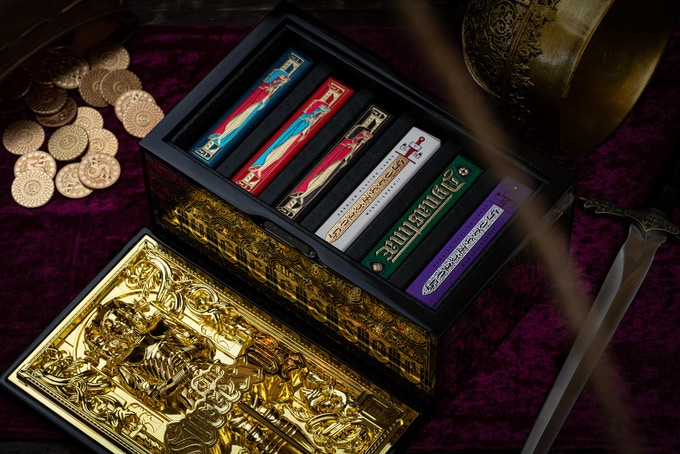
Above: Showing all six editions of the Successor deck can be slotted inside the Successor Sarcophagus collectors box.
To conclude with another quote from Hoffmann’s excellent book: “playing cards are not always intended for play. One can certainly play with cards or collect them as curiosities, or they can be used for educational purposes. […] but card makers were often also good businessmen and wanted to offer something to people of cultivated tastes. This could explain the differences in quality between ordinary cards and cards produced solely for the collectors”.
Using limited editions or the crowd-funding model and assisted by social media, entrepreneurial playing card artists have found innovative ways to continue selling “exclusive and luxurious” decks, as established by artisans since the 15th century.
References
- Hoffmann, Detlef, The Playing Card: An Illustrated History, Page 10
- Bostock, Paul, Clear the Decks, December 2019, page 10
- Bostock, Paul, Clear the Decks, March 2020, page 11
- Carpenter, Paul , Clear the Decks, January 2020, page 4
- Asher, Lee, Collecting Playing Card NFTs
- Hall, Tony, Why do we Collect? My 20 Favourite Items
- Starling, Rod, Is Card Collecting an Investment?
- Legends Playing Card Co. - Origins
- Seasons Playing Cards - Our Legacy
- Hermes bridge deck with 54 silver-edged cards
- The Beatles Playing Cards by Theory11
- Anubis & Osiris Shadow Luxury Playing Cards by Steve Minty
- Taylor, Ian, via email, April 2022.
- Playing Cards That’ll Transform Your Next Game of Poker—or Solitaire
By Adam Wintle
Thailand • Member since March 15, 1997 • Contact
Adam has been involved in developing the site as well as reviewing new decks and conducting research. He is particularly interested in innovation, Kickstarter and East Asian cards. He is a member of the IPCS and webmaster of the EPCS.

Related Articles
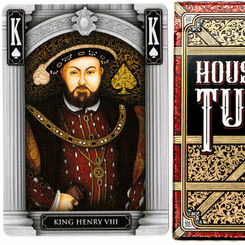
House of Tudor
Randy Butterfield's House of Tudor playing cards feature detailed art in a high-quality collectible ...
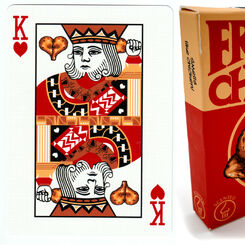
Fried Chicken Playing Cards
This innovative chicken-themed concept combines playing cards with the aroma of fried chicken.

Shakespeare Playing Cards
Kickstarter-funded modern remake of the 1902 classic pack, perfect for Shakespeare
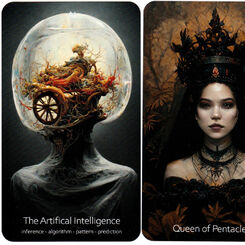
Tarot of the Everlasting Day - AI Generated Tarot
Artificial Intelligence (AI) generated tarot deck produced by Marcus Katz. Is this science fiction o...

Arthurian by Kings Wild Project
Arthurian Playing Cards by Kings Wild Project, a luxury playing card deck designed by Jackson Robins...

Mucha Playing Cards
Mucha Playing Cards, a deck of playing cards that pays tribute to the artwork of Alphonse Mucha.

Kings Wild Tigers Playing Cards
Kings Wild Tigers is Jackson Robinson’s 27th successful playing card Kickstarter campaign. A luxury ...

The Grand Chinatown Edition by Riffle Shuffle Playing Card Co.
1920s gangster-themed playing cards, "The Grand", were produced by Kevin Yu under the Riffle Shuffle...

Sirocco Playing Cards
Sirocco, nautical themed playing cards by Riffle Shuffle Playing Card Co. and designed by Nathan Ose...

A. Dougherty’s Triplicate Recreation
A recreated of the original 1876, No. 18, Triplicate deck by A. Dougherty by Michael Scott in 2014. ...
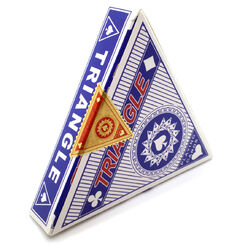
Triangle Playing Cards
Triangle Playing Cards by Michael Scott.

MEMENTO
Memento, a unique Playing Card Deck designed by Valerio Aversa and Antonios Fiala, inspired by the h...
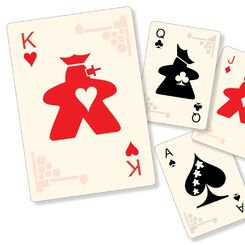
Meeple Playing Cards
Meeple playing cards is where the iconic shape of the “meeple” used in many board games meets playin...
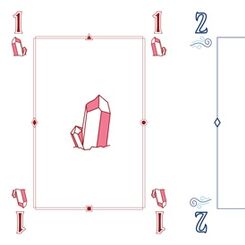
The Z Deck
The Z Deck is a new non-standard pack of cards created by Robert Bolduc. Each card has a third aspec...

Tinker Deck
The Tinker Deck is a pack inspired by Steampunk, a world where old machinery is infused with mode...
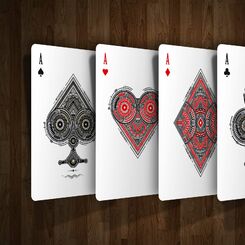
Believe Playing Cards
A deck of playing cards inspired by the Wayang Shadow Puppets of the Island of Java.
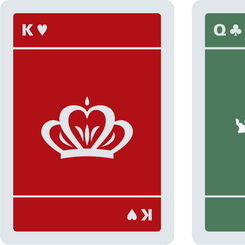
Interview with Alan Kriegel, creator of Gestalt playing cards
Alan Kriegel has set out to rethink the signs and symbols used in traditional playing cards.
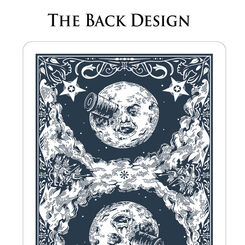
The Méliès Playing Cards
The iconic film "A Trip To The Moon" reimagined for playing cards.
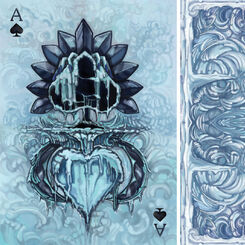
Winter Deck by Ultramarine Designs
Inspired by freezing tribal images of northern winter, this deck is called to show you all its mysti...

26: Playing Cards: Rarity, Value, Dating, Sellers and eBay
Notions like rarity and monetary value are slippery customers and need careful handling. And there a...
Most Popular
Our top articles from the past 60 days


